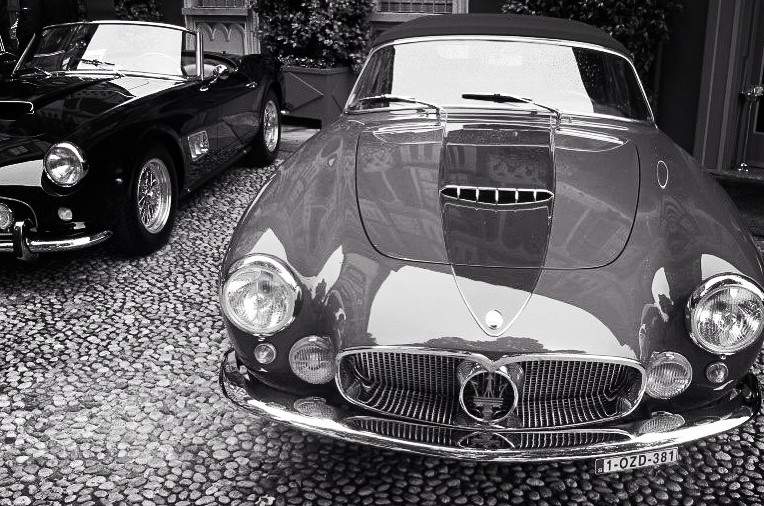
The most beautiful classic cars? Made in Italy
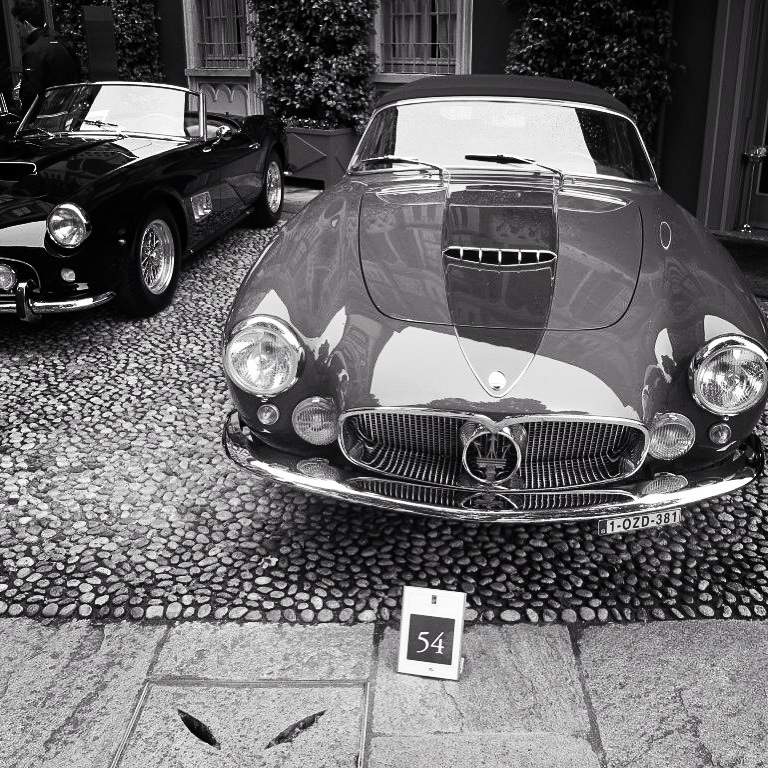
Sometimes pictures help you explain a point and are more useful than words.
So lets have this picture speak without much writing other than to say: While I appreciate German classic cars for their reliability and British cars for their elegance, I think the most beautiful classic cars in my opinion belong to the Italians.
In large part due to Pininfarina but also Vignale, Zagato, Frua and Scaglietti- the Italians are the masters of design.
This picture is a good illustration of what I mean.
The Maserati above was designed by Frua and is a rare convertible while the car on the left is a masterpiece designed by Scaglietti (Scaglietti rarely designed cars but rather built them- this car was an exception along with the 250 TR pontoon).
The car we are talking about is a 1962 Ferrari 250 california spyder SWB owned by an Italian collector who owns several other beautiful Ferraris including a nice 500 TRC. What is especially appealing about this picture is the stone pattern below the cars which remind us of the leather of stingrays.
This picture was taken at Villa d’este in 2013.
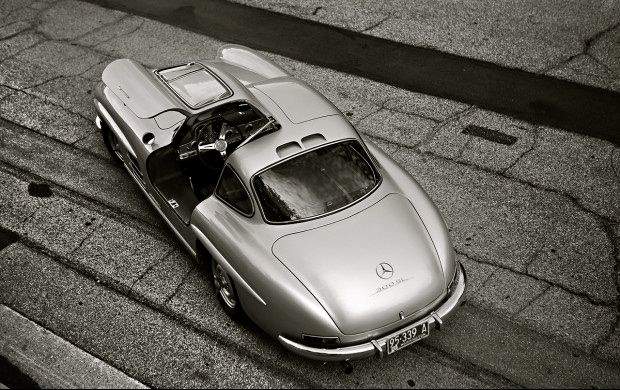
2015 Scottsdale analysis: first cracks emerging?
In our recent post we predicted that the classic car market would slown down in 2015.
Our prediction was not so wrong.
It is much to early to tell and we only had one test so far- but the signs were not encouraging. Scottsdale 2015 just finished and the results were lackluster.
The auctions houses might have done well volume wise and post some records in terms of cars sold but I bet the average lot sold went down (they didn’t disclose that figure yet). There were many disappointing results.
To start with a 250 LWB Ferrari selling only for $7.7m including commission was on the soft side. Perhaps it did not help that the car was originally an open headlight car but then converted to covered headlights. A Ferrari 275 GTB-alloy failing to sell? Surely not a good sign.
But the best indicator that things are softening can be seen with the car above. It was a 300SL Gullwing. But not just any Gullwing. It was THE gulling to own. Rudge wheels delivered by the factory (super rare and desirable). The perfect color combination – silver and red interior – delivered by the factory when it left new in 1956. Recently restored by Gullwing expert Paul Russell – who is known for his expertise on Gullwings.
This car ticked all the right boxes.
But yet it failed to sell and stalled at $1.25m. To make matters even worse – the estimate of the car was very reasonable at $1.5 -1.8m. When such a blue chip car fails to sell – you have to wonder what is going on.
Yes, it is true there were many 300SL both Roadsters and Coupe available which did not help things.
Nonetheless -the Gullwing is an Icon of which there is far more demand than supply. It is a blue chip collector car and a good barometer of how the classic car market is doing. As we also said in our last post – it is the 1990s cars that are selling strong. An F40 was in strong demand at nearly $1.3m and fetched a strong price as did a Ferrari 288 GTO which broke a record price at $2.75m. Porsche 959 are now securely selling above $1m and not looking back.
These cars that were on the bedroom walls of todays 40+ generation, are on fire.
Lets see if this trend continues.
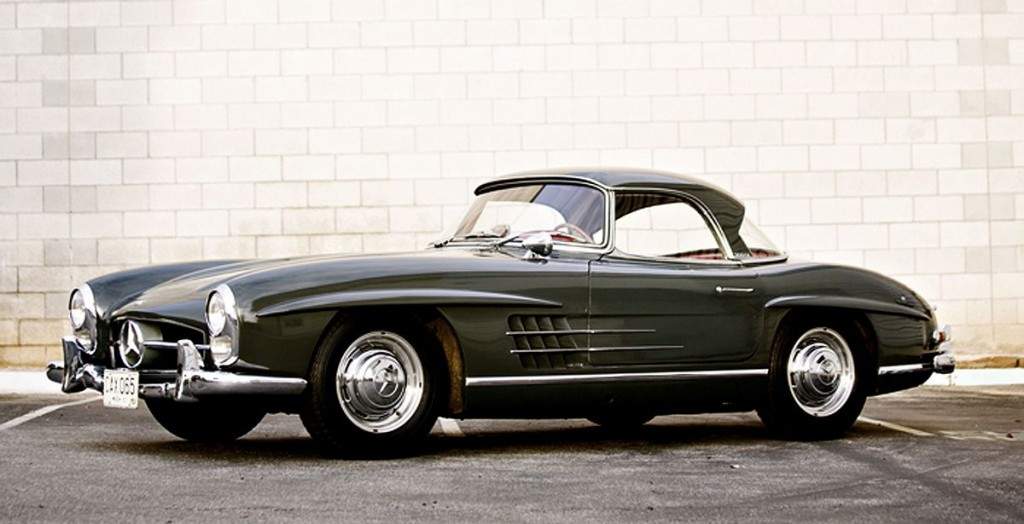
A stunning 300SL Roadster
It is becoming increasingly hard to find beautiful and original cars with attractive color combinations.
But they still exist.
Gooding is selling a magnificent Mercedes 300SL Roadster from 1960 in the upcoming Scottsdale auction which is the first classic car auction of importance for 2015.
As many of you know I am a Gullwing fan (and owner) and thus I have always preferred the Iconic Gullwing over the Roadster. But for this example I would make an exception.
Here is why.
Before I explain, let me state clearly: I don’t like convertible cars. I think as a general rule they suit women better than they do men. My father always told me that the most beautiful cars are closed and not open roof. I think he is right.
But what I do like increasingly more is a convertible with a hardtop. Like this 300 Roadster above (main picture) from 1960- that Gooding is selling. They are many reasons to own this car.
First the colors on this car are extremely attractive (grey outside and red interior) and this is one of the most beautiful color combinations available for any car. The best part: these are the original colors of the car- in 1960 this Mercedes left the factory with this attractive combination.
Secondly the car retains the original factory hardtop- a rare and desirable option. Third the car comes from a long term ownership of over three decades and the car is largely original. Even the chalk marks can be found under the seats cushions under the door panels – a testament to its originality. It is also thought that the car retains the original exterior paint work. As an additional bonus the car comes with the original handbooks and tools.
The estimate for the car is $1.7 -2m.
Quality it seems has its price.
(For more information on the car please see here. )
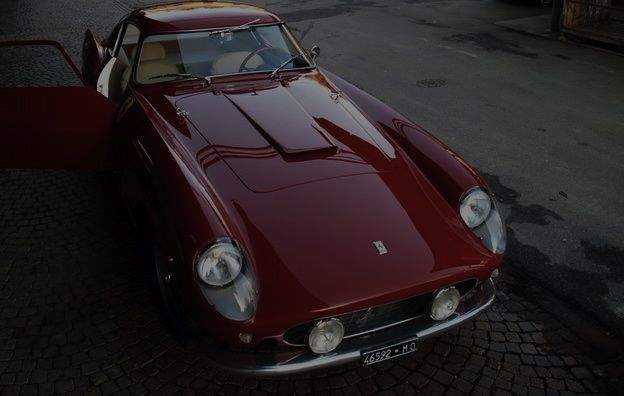
Instagram Post of the year 2014: Ferrari 250 TDF

I have posted some 300 posts for 2014 which is also the year I started my Instagram account. Some of the most beautiful cars in the world are on my feed. Cars that are rightly regarded as pieces of art today. Mercedes 300SL Gullwing. Ferrari 250 SWB. Ferrari 250 Testarossa pontoon fender. Ferrari 250 California Spyder. Maserati A6G2000 Zagato. Aston Martin DB4 Zagato. Each of the cars mentioned are really sculptures that also happen to have an engine inside. What was the most popular picture of them all?
It was a surprising choice. With over 419 likes it was the Ferrari 250 TDF. Made in end of the 1950s the TDF or ‘tour de France’ is one of the most important cars Ferrari ever made. The 250 TDF is part of the famed 250 series which includes the GTO, the Cal Spyder, the SWB and the Lusso. The TDF was a very successful race-car for Ferrari and won numerous car races and rallyes including the TDF numerous times. The car is an all alloy car and thus very light. While historians and connoisseurs always have had a weakness for the 250 TDF, the general public has favored the 250 SWB as the early 1960s dual-purpose car to own. So it was surprising to see the 250 TDF win the picture contest over all other cars including the 250 SWB. I think the win is well deserved. The car is elegant but still aggressive. The most attractive TDF in my opinion is the car above, with covered headlights and a single louver car (many other versions exist including open headlight and 3 or 14 louvers). To borrow an analogy from the Rolex world, which many readers might relate too, the TDF is the small crown submariner while the 250 SWB might be the big crown. The 250 SWB is perhaps, like the Rolex big crown, the obvious choice and many consider the car, rightly so, to be among the most beautiful and well proportioned in the world. The more understated choice is the 250 TDF and it is – in relation to Ferrari history – perhaps more important than the 250 SWB., much like the small crown submariners from Rolex. The TDF is much rarer too, only 77 were made versus more than 160 SWB (both competition and steel versions). Lastly maybe the deciding factor in choosing this picture might have had nothing to do with the car but rather the exceptional color. A beautiful Bordeaux that suits Ferrari exquisitely.
NB: Picture credit – AFMBR – Ferrari chat.